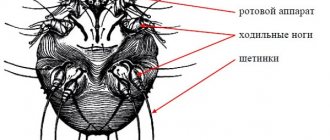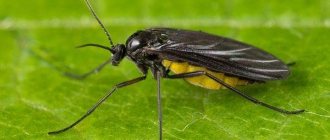Seasonal tick-borne piroplasmosis in dogs is a real disaster for dogs and their owners. And if you also take into account the mass of various ailments that plague domestic animals in the summer, then this even makes your head spin. And you need to protect your pet from all this negativity. Unfortunately, not all owners know how dangerous the bite of even one tick can be. At the same time, owners can be divided into those who have no idea what the consequences could be and those who have encountered this problem in life, having lost a pet. Without immediate medical intervention, the animal is doomed.
Therefore, every owner of a four-legged friend should have the skills to properly remove ticks. If you detect a parasite on an animal in time and remove it, this will greatly reduce the likelihood of contracting some kind of disease. If this is done incorrectly, the consequences can be very, very disastrous.
Animals such as cats and dogs are often attacked by ticks and this is not surprising, since they are constantly in the zones of action of these parasites. And this despite the fact that there are many anti-tick drugs. The fact is that no drug guarantees 100% protection, especially for a long period and during periods of tick activity.
On a note! Even after treatment with modern acaricides or repellents, a dog can be attacked by a tick, and after a bite, become infected with Babesia piroplasmosis and die within a week if treatment is not started in time.
Danger of ticks in dogs
Almost all types of ticks from the ixodid and argasid species, which feed on blood, are universal carriers of various pathogens of infectious diseases through their bite. Each type of parasite has its own specific pathogens, depending on the type of victim on which they parasitize. Ticks that attack humans carry dangerous diseases such as encephalitis and Lyme borreliosis, and ticks in dogs infect animals with piroplasmosis, the most dangerous disease, since even with successful treatment, up to 90% of animals die.
This is mainly due to late seeking of medical help. If this is done on time, then there is a chance of a full recovery. Even the slightest delay can result in various irreversible complications and a long period of treatment.
The most vulnerable to piroplasmosis are purebred dogs, hunting dogs, puppies and elderly individuals. Even a single tick bite can lead to unpredictable consequences.
On a note! Naturally, not every tick that bites a dog infects it with a dangerous disease. Since there is a risk, it is better to have the tick tested. Dogs react calmly to tick removal, so there will be no problems with removing the parasite. Unfortunately, this is not always possible, since the disease passes very quickly and the tick must be tested as quickly as possible.
When a tick bites a dog, pathogens, namely Babesia, along with parasite secretions, enter the animal’s blood. After this, they invade the red cells and destroy them. As a result, the animal's hemoglobin level drops and within a week the animal falls into a coma and dies. At the same time, during this period the animal suffers very seriously. Clinical picture of piroplasmosis:
- Within 2-4 days, although it may take two weeks, the results of the disease appear in the dog’s behavior.
- The dog loses its appetite and refuses its favorite treats and food in general.
- Her movements become stiff, sluggish and reluctant, as if all her muscles hurt.
- A high temperature rises, about 42 degrees, accompanied by chills. The animal is breathing frequently and heavily.
- The dog begins to experience nausea and vomiting due to an intestinal disorder.
- The dog tries to retire and not show himself to others, refusing to communicate.
- At the same time, the mucous membranes change their color to yellow or turn pale.
But the very first sign is a change in the color of urine, which is distinguished by a rich dark shade, similar to coffee or strong tea. If you manage to remove a tick from a dog, then it must be monitored for 1 week. If there is the slightest change in your pet’s behavior, you should immediately contact a veterinary clinic.
Attention! When a tick bites, it can infect a dog not only with piroplasmosis, but also with other, no less dangerous ailments, such as rickettsia ehrlichiosis, hemobartonellosis microbes, and Lyme borreliosis. Some of the ailments can also threaten the dog owner. Therefore, protection against ticks and constant inspection of the animal for the presence of parasites is the key to excellent everyday well-being for both the dog and its owner.
Bite symptoms
If your dog is bitten by an uninfected tick, you still shouldn’t treat it with disdain. The bite site should be treated with an antiseptic. The wound may fester or an allergic reaction may occur. In the case of a viral tick, everything is much more complicated. Symptoms of the disease may appear only after 2-3 weeks. The tick falls off when it drinks blood, but this takes a lot of time. But you still may not notice it during this period. If you observe at least one of the symptoms in your dog, you should immediately take him to the veterinarian. It happens that symptoms appear as early as 2-4 days. Then the disease progresses faster.
To prevent the development of the disease, the tick must be caught alive. Place it in a jar with a lid and throw in some wet cotton wool. You can store it this way for no more than a day in the refrigerator. After this, it must be submitted to a laboratory for examination. And the dog needs to donate blood.
This way you will know for sure about the infection. Sometimes it happens that the parasite has been infected, but the victim itself has not. Therefore, a blood test is required. The first urge to worry is refusal to eat. If the animal is not eating anything, this could be related to many other problems. Even psychological ones. But more often it signals various diseases in the body. The virus attacks the nervous system. Gradually the muscles become numb, and the dog cannot walk or moves sluggishly. Sometimes this is accompanied by pain. The dog stops being active, refuses walks and generally lies down. The intestines also suffer. Vomiting or loose stools, urine may change color to green or pink. Always monitor your pet's condition. But after a tick bite, you need to monitor it especially carefully and, at the slightest deviation, immediately contact a veterinarian. Otherwise, the animal may die.
How, when and where to look for ticks on a dog
Finding a tick on a dog is not so easy, considering how thick its fur is and what a small parasite it is. It's important to know where to look and when to look. The tick, when it is saturated with blood, will fall off on its own, but during this time it can transmit the entire bouquet of harmful microorganisms to the animal. Therefore, it is very important to find the parasite and remove it, and this must be done correctly. Simple rules will help you get rid of the parasite on time. For example:
- Firstly, the animal must be examined every day, feeling its fur.
- The tick, having caught on the animal's fur, looks for places where the skin is thinnest and the capillaries are closest.
- There is no point in examining the dog immediately after a walk, since it is very difficult to find a hungry tick in the thick fur due to its small size.
- Only after the tick attaches itself to the animal’s body and becomes fixed, and then increases in size, can it be found on the dog’s body and pulled out.
- From the moment of the first walk until the moment of the next walk, this is exactly the interval during which the tick will already drink the blood of the pet, but not earlier than 3 hours after the walk.
Naturally, this means everyday walks.
The animal has areas where inspection should be carried out first. These are areas such as the muzzle, ear and neck area, the inner sides of both front and hind legs, stomach, chest and groin area.
On a note! When palpating problem areas, you should pay attention to the characteristic bumps that were not previously in these places. This could just be a tick.
We remove the tick from the dog. How to remove a tick, how to remove a tick. A tick on a dog.
If your dog is bitten by a tick, treatment
If you notice the above symptoms, contact your veterinarian to confirm the diagnosis. If a dog is bitten by a tick, then after detection, treatment follows. Main stages:
- Medications are prescribed (imidoxan, azidine, imizol, veriben, berenil, forticarb, imidocarb, pyrostop). They help kill parasites.
- Supportive therapy, taking immunomodulators and cardiac medications that have a beneficial effect on liver function.
- Preventing possible complications or treating them.
It is in the spring, after the snow has melted, that ticks begin to become more active and are ready to look for new victims. It is necessary to remember the danger these parasitic insects pose, because they are literally reservoirs of infection, which they are capable of transmitting even to their offspring. Timely disinfestation will help avoid parasite bites.
The correct algorithm for removing a tick from a dog
If you still manage to find a tick, you can do the following: contact a veterinary clinic or begin removing the tick at home yourself, adhering to certain rules. Naturally, the first option is the most suitable, since specialists will not only remove the tick, but also analyze it. Unfortunately, this is not always possible, since the clinic may be located at a considerable distance, and transport may not be available at this moment. In this case, you will have to remove the tick yourself.
Such skills can be useful, since no animal is immune from attacks by ticks and other parasites. By the way, ticks are removed from humans using the same principle. But here we need a clear procedure, otherwise the consequences can be very unpredictable.
So:
- A better way to deal with ticks is with special tweezers, which are sold in pharmacies, both human and veterinary. His grip is made at a right angle. The gripper is placed on the parasite's body, which protrudes from the animal's body. When the tweezers begin to turn in one direction or another, the tick is easily removed with this grip without any damage. After this, the tick should be submitted for analysis.
- To remove a tick, regular tweezers will also work if you don’t have special ones. To do this, the jaws of the tweezers should be positioned horizontally, or, in other words, parallel to the animal’s body, since the tick can be located anywhere, but not at an angle. The jaws of the tweezers pry the parasite at the point where its head enters the animal's body. You cannot grab it by the body, as you can crush it, which is undesirable. Holding the tick firmly, the tweezers turn in any direction, after which it falls away from the body. You cannot pull the tick upward, as the parasite can be torn apart, and the head and proboscis will remain in the dog’s body.
- If there are no such tools, you will have to pull them out with your fingers. To do this, wrap your fingers with a piece of clean cloth or a bandage. The parasite must be captured as close as possible to its entry point into the animal’s body. After this, the tick needs to be unscrewed, but under no circumstances should you pull it up, much less pull it. The fact is that the tick is securely held inside by its claws and any sudden upward movement leads to its body being torn off from the head.
- After successfully ridding the dog of the parasite, the wound must be disinfected with any antiseptic or hydrogen peroxide, and maybe even alcohol-containing liquids.
On a note! If you moisten the tick with some alcohol solution, it will be much easier to remove the tick. It is better not to use any other compositions, as this can only cause harm.
★ How to easily remove a tick | How to remove a tick
What to do
The pet industry offers a selection of devices for removing attached parasites from a dog’s skin at home. You will get acquainted with the tools, step-by-step instructions for their use and cost.
It happens that during inspection you notice dead ticks. The insects probably stumbled upon the flea collar, or were poisoned by the insectoacaricides you treated your pet with. In this case, collect the parasites and burn them. Inside the arthropod there may be pathogens of dangerous infections or invasions.
What to pull out
Experienced veterinarians and medical doctors have long used specialized tweezers with teeth to pull out attached ticks. However, without acquired skills in working with the device, it is not possible to get a tick from a dog without destruction.
Traditional anatomical tweezers are a poor tool for removing arthropods embedded in the skin.
There are conflicting reviews about working with the Russian-made Anti-mite device. Some dog owners and veterinarians consider tweezers to be a reliable tool, while others speak negatively about them.
I tried to pull it out correctly once and crushed the tick. However, this is my personal impression. Therefore, I recommend using the tick ticker Tik Twister.
Clincher Tick Twister
The device has never let me down.
Read more in the subsection “Instructions for extraction”, but now we will list the popular tools with which bloodsuckers are pulled out:
- Tick Key;
- Trix Tix Lasso;
- Pro-tick;
- Trixie.
Instructions
Let's take a closer look at the procedure for turning out parasites using the Tick Twister device.
The packaging box contains instructions for use and two mites. One larger one is designed to pull out an insect that has managed to drink blood and increase in size tens of times. The smaller one is used for a parasite that has just attached itself.
When examining your dog, wear rubber gloves to avoid accidentally crushing the parasite and becoming infected.
If you find an attached tick, move the crevice of the tool under it, from behind until it stops. Turn the device clockwise several times. If you are left-handed, then against it.
The main thing is not to change the direction of rotation until the parasite is detached from the skin. If a tick has attacked you or your household, remove it using the method described above.
Watch the video:
Tick Key
The Tick Key device is an anodized aluminum plate made in the shape of a key fob. The assortment includes tools of any color. Place a teardrop-shaped slot under the tick and unscrew it, similar to the Tick-Twister. Cost - 450 rub.
Trix Tix Lasso
The Trix Tix Lasso is similar to a fountain pen. Press the button, a loop of soft, durable material will appear - a lasso. Move it under the head and release the button. The loop tightens and you can easily unscrew the arthropod. The device allows you to safely remove a tick from a hard-to-reach place. Price - 400 rub.
Pro-tick
The Pro-tick is a metal plate that is equipped with a magnifying glass for precise capture of the parasite. Place the metal plate under the attached tick. To remove the bloodsucker, make several twisting movements. The device can be put in a wallet or used as a keychain. Price - 250 rub.
Trixie is made of durable plastic and has a ring for attaching keys. The mechanism of action is the same as that of Pro-tick devices. Price 130 rub.
Common mistakes when removing a tick
Incorrect actions when trying to remove a tick from a dog’s body lead to disastrous results, since infection is guaranteed. So, what not to do:
- According to many, if you apply a drop of some kind of oil to a tick, the tick will get out on its own, since its access to oxygen is blocked. Indeed, this way you can block the tick’s breathing, but it will not get out, but rather will die, remaining stuck in the animal’s body. But as a result of death, the entire contents of the proboscis will end up in the wound, along with all kinds of pathogens.
- The same result is achieved by the use of other liquids, such as kerosene, gasoline, etc., which will kill the tick located on the skin of the animal.
- If, as a result of pulling out, the parasite ruptures, then the result is the same: the parasite dies, and all the pathogens enter the animal’s bloodstream. This result also does not bode well.
- In addition, there is another side to the coin: a damaged tick, as well as a tick doused with kerosene or gasoline, is unlikely to be taken for analysis. In this case, you will have to rely only on luck and a happy outcome, since not every bite leads to infection.
If the tick head remains in the dog
You need to completely remove the tick from your dog. If there is a head left, it must be removed, otherwise it will cause inflammation and suppuration, and subsequently infect the animal. This is done using a sterilized needle. The actions are reminiscent of pulling out a splinter. The head remaining in the skin looks like a black dot. After the procedure, the dog's wound is treated with iodine.
If the head remaining in the skin cannot be seen, the pet should be taken to the veterinarian. He will remove the bloodsucker through a small incision.
After removing the tick head, a small lump may remain at the bite site. It goes away on its own within a few days. The appearance of suppuration at this site requires the intervention of a veterinarian.
Actions after tick removal
After removing the parasite from the dog’s body, you need to decide what to do with it next. At the same time, you need to monitor the animal’s behavior every day. That's why:
- The ideal option is to transfer the parasite for research to a special service if it was removed without damage and alive. This is the only way to find out whether the tick is a carrier of such terrible ailments.
- To preserve a tick, you need to place it in a small container and close it tightly, but so that there is access to air.
- During the first 2 days, you need to fulfill your intentions and take the tick for analysis.
- If this is not possible, then it is better to destroy the tick. The best option is to burn the parasite.
- The same should be done with a damaged parasite.
After this, especially in the first couple of days, you need to carefully monitor the condition of your four-legged friend. If during this period the dog begins to show reluctance to play, refuses food, especially that which it often begs for, and even more so when the dog begins to feel sick and vomiting, these are signs of developing piroplasmosis. In this case, there is not a minute to lose.
How does a tick attach to an animal's body?
Before attempting to extract this parasite, you must first find it. Ticks dig into areas of the skin where blood vessels are located as close as possible to its surface. The favorite places of these insects in dogs are behind the ears, auricles, neck, inside and back of the paws, and groin area.
These are very cunning creatures. As a rule, bloodsuckers wait for their prey, hiding in the grass. They climb to a height of no less than 40 and no more than 80 centimeters. A hungry tick finds its victim thanks to sensory organs that respond to an increase in air temperature, which heats up when a warm-blooded creature approaches, in particular a dog, as well as carbon dioxide exhaled by the target of attack.
Having latched onto an animal, the parasite begins to look for the least hairy place on its body. Having found it, the insect digs into the skin with its trunk and tentacles, on which there are peculiar spikes-hooks. At the same time, it literally grows together with the dog’s skin, becoming like a pea in brown, black, gray, dirty pink color (the shade depends on the type of tick). An embedded parasite is almost impossible to remove from a pet’s body until it drinks blood and falls off on its own.
How to best protect your dog from tick attacks
Since the dog loves to walk in the grass, it is not difficult for him to pick up a tick. The tick easily clings to the animal's fur, and all it has to do is get to the body itself. As a rule, the tick clings to the lower part of the body, although it all depends on the dog’s height. After a tick lands on an animal, it slowly begins to look for a suitable place to bite.
Starting from spring to autumn, almost all dogs run the risk of catching a tick, regardless of what kind of grass he runs on, whether it is grass outside the city, in a country house, or in a city park. Ticks can be found in both places. Therefore, during this period it is very important to regularly treat animals with acaricides and repellents.
Quite often, ticks infect treated dogs. Either these drugs are not effective, or the ticks have already developed immunity to certain chemicals. To reduce the risk of your dog becoming infected with piroplasmosis, it is better to follow a number of rules. For example:
- Visit a veterinary clinic and consult with specialists about which medications are best to treat the dog with, and which medications have lost their effectiveness.
- Currently, experts recommend an integrated approach to solving this problem. It is better to protect the dog according to the principle: drops + spray, drops + protective collar, collar + spray.
On a note! An ordinary dog overall can protect the animal during a walk. It reliably protects exactly those places where a tick can cling.
Bite site
The tick is a cunning creature, and most importantly, it is barely noticeable. It is not easy to notice even on the skin, let alone a dog’s thick fur. Therefore, you cannot hope that if a tick bites you, you will see it! A simple and effective way is to scratch your dog every time after a walk. This will be beneficial for the coat and protect against parasites. Ticks have favorite places to bite. Most often these are soft areas without abundant hair: the abdomen, ears, paws, groin.
This is where you should look first. A tick, clinging to a victim, can spend from 4 to 6 hours searching for the right place. If you notice some kind of reptile on the dog’s body, do not rush to crush it. If it is a tick, then it is equally dangerous for you. You only need to remove it with rubber gloves, and then destroy it in alcohol. You can still burn it. Sometimes the animal begins to try to reach the bite site, many even gnaw out pieces of fur. If you notice that the dog is worried about something, is itching or is trying to reach a certain place, then be sure to examine it.
Flea and tick oils
Remedies on this basis are not a panacea for already acquired parasites. Due to their rich smell, they will repel blood-sucking individuals, thereby preventing pests from getting on the fur and skin of pets. Among breeders and veterinarians, the following plants are recognized as the most effective anti-tick essential oils for dogs:
- tea tree;
- carnations;
- juniper;
- pennyroyal;
- rosemary;
- thyme;
- eucalyptus;
- rosemary;
- lavender;
- cedar;
- citronella;
- geraniums
Oils against fleas and ticks
Pennyroyal is not used to treat puppies or expectant mothers. You should treat your dog against ticks carefully, as some options can cause allergies in your pet. Immediately after the first treatment, it is necessary to observe the dog for an hour; if it becomes irritable or, on the contrary, too calm and lethargic, then this drug should not be used anymore.
Applying anti-tick oil is simple, just drop a few drops of the chosen product on your hands, rub a little and treat your pet's fur against growth. Such movements can be done several times, but you should not add funds.
Animals have a much more sensitive sense of smell than humans, so the concentration of the product is chosen to be minimal.











